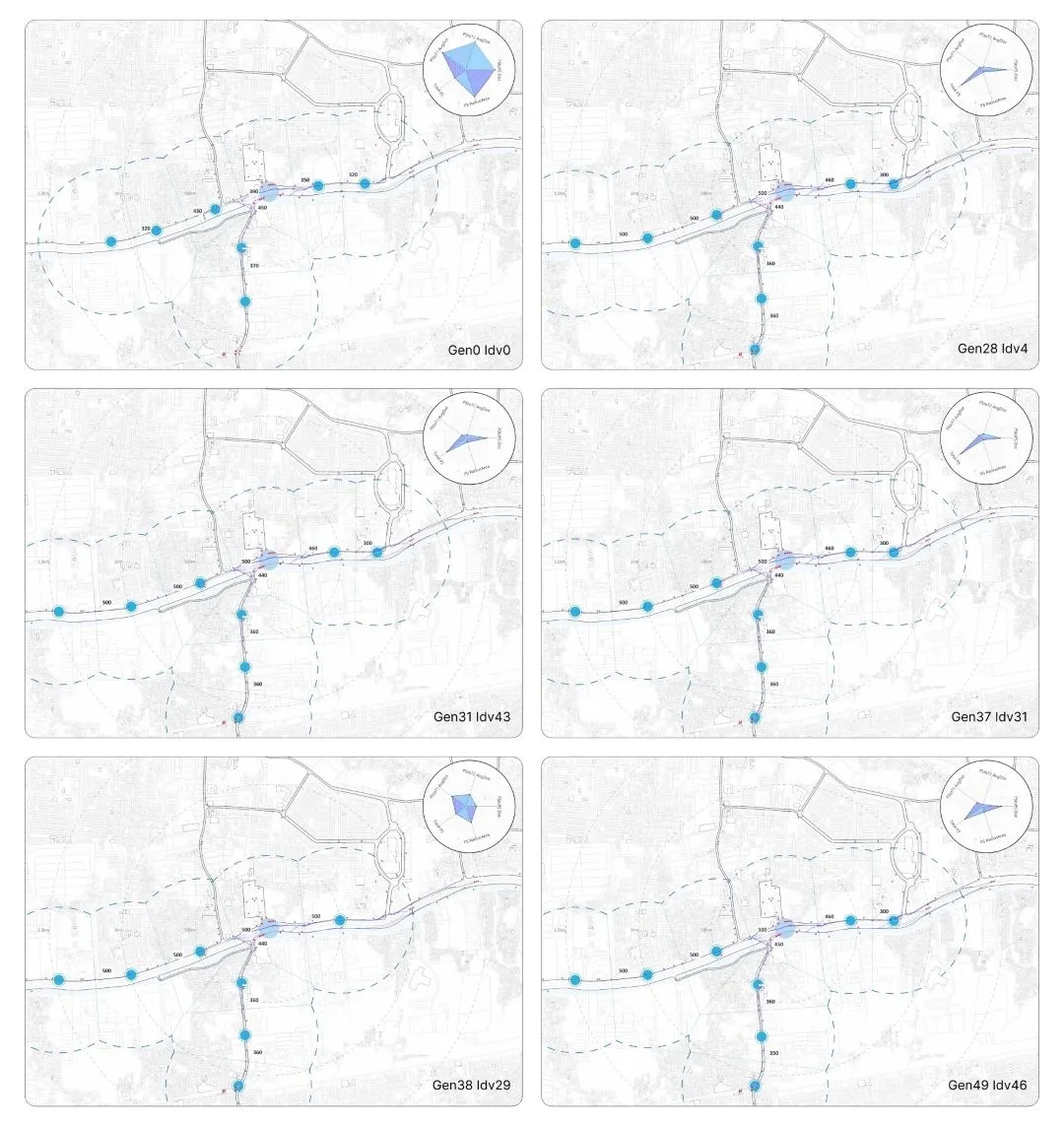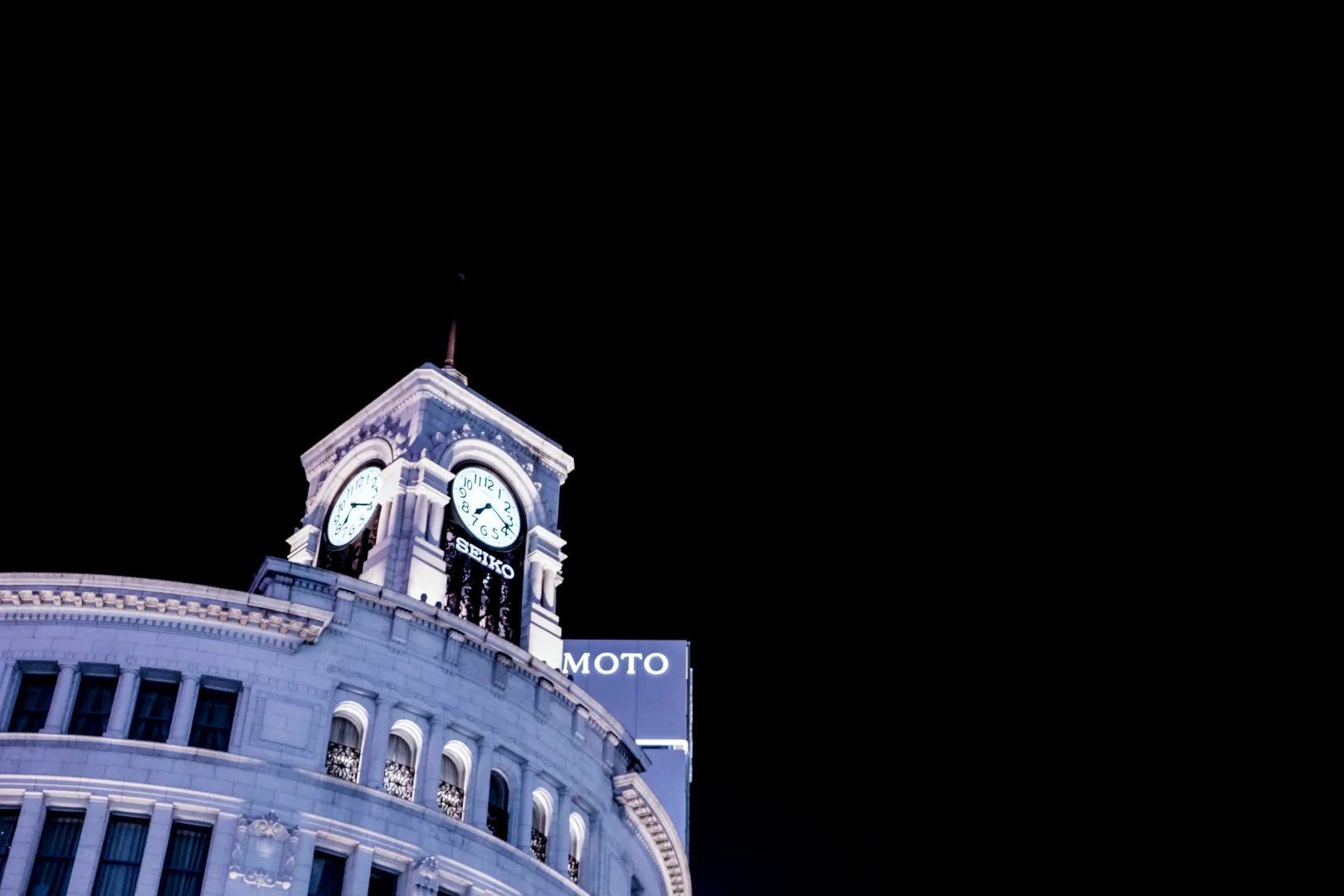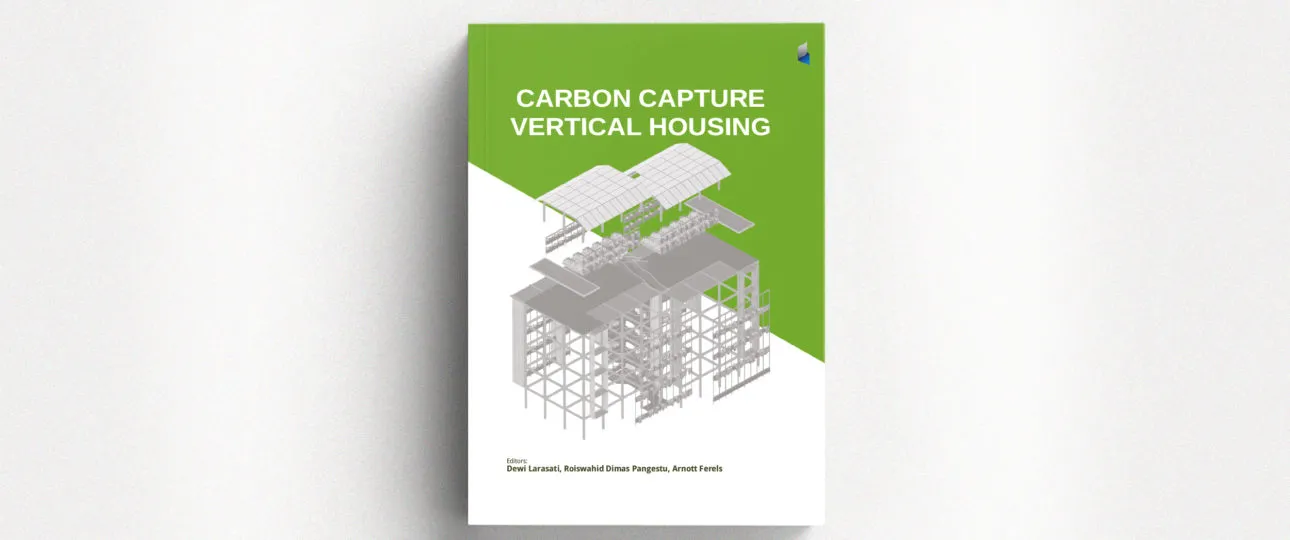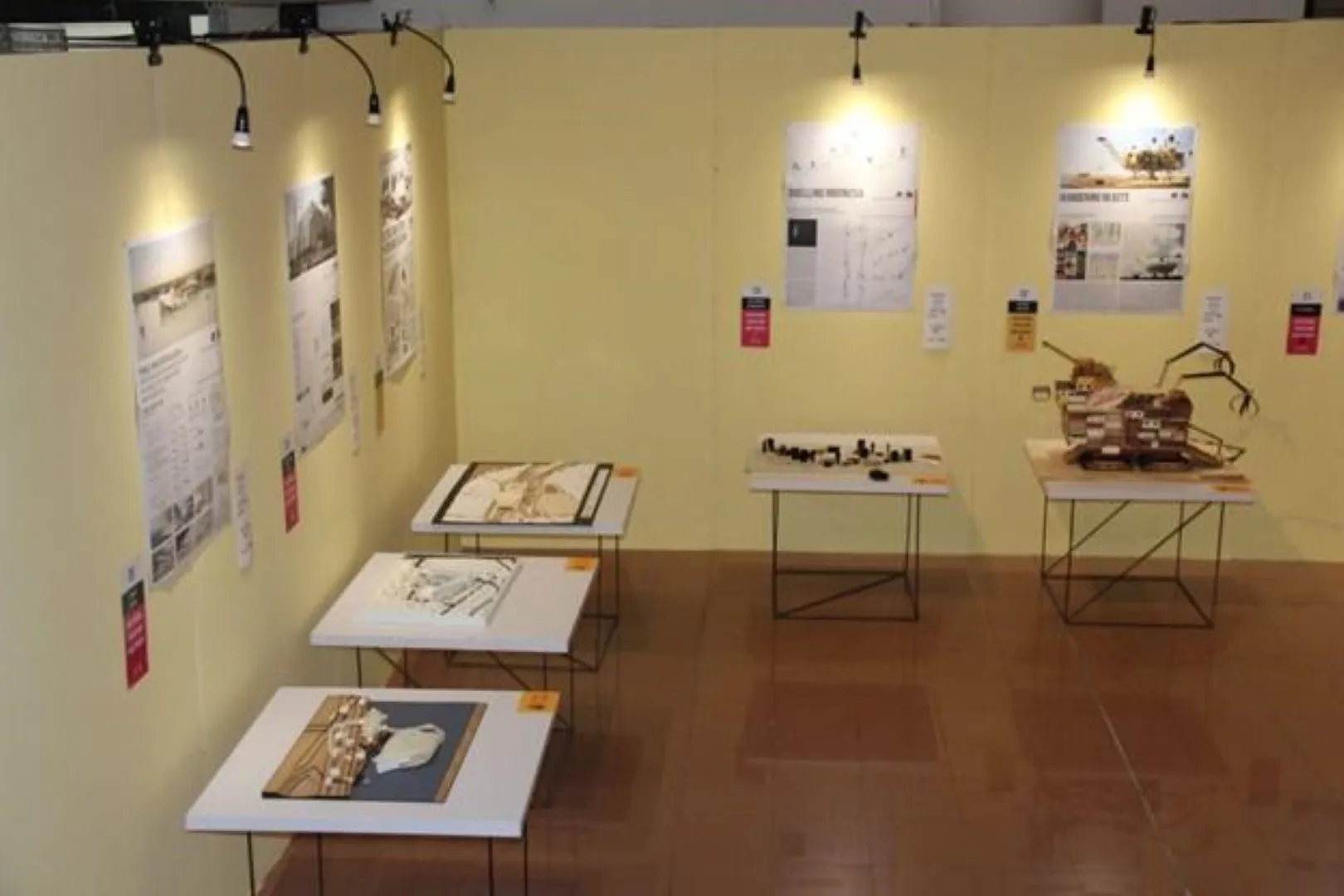Acoustic Ray Simulation
Designing and Evaluating the KAI-MICE Auditorium Design
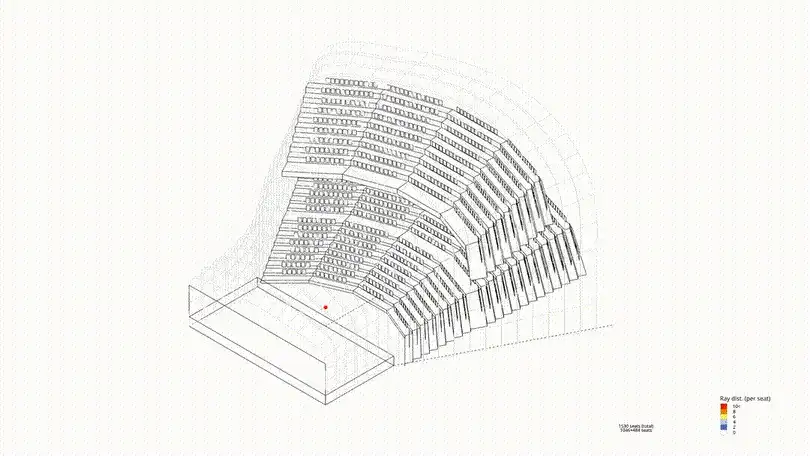
Details
Method#
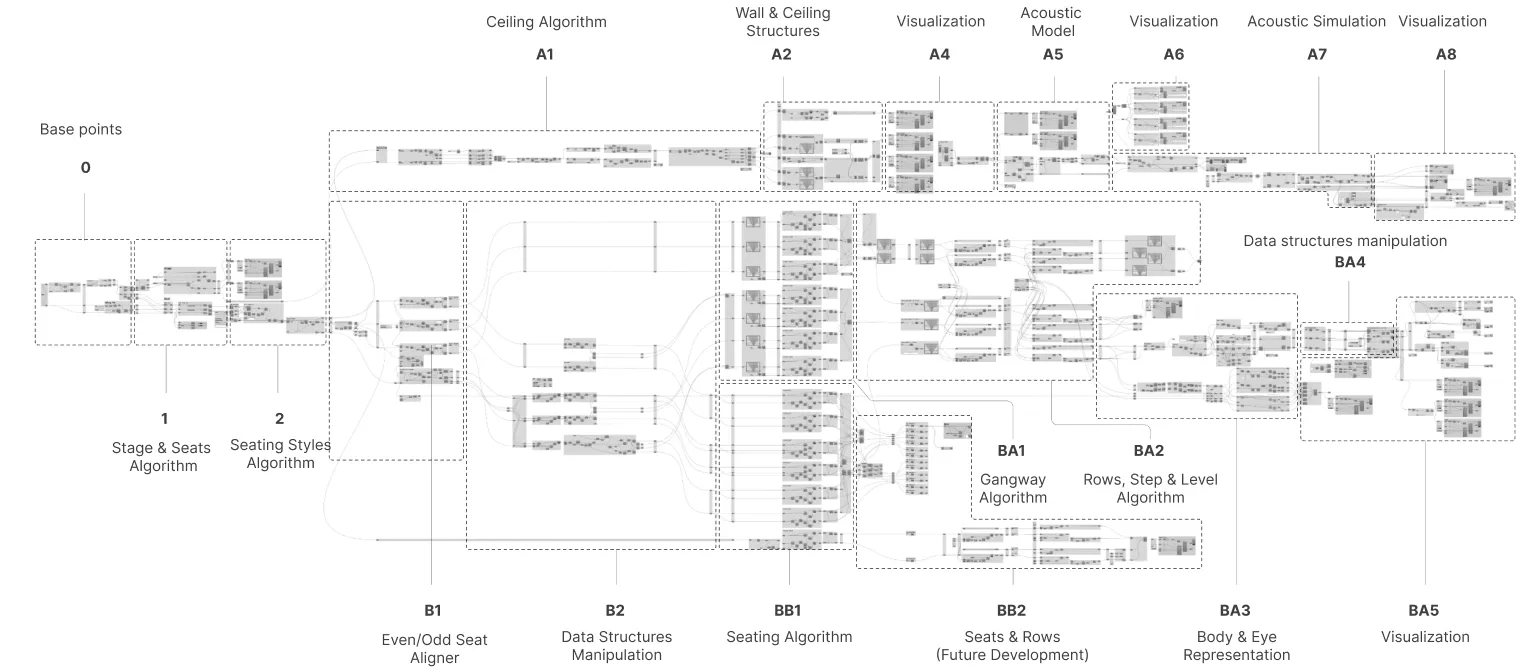
Initialized by the clients according to the Terms of Reference (TOR) from Kereta Api Indonesia [1], the project aimed to create a comprehensive auditorium model. Drawing inspiration from Architect’s Data by Neufert [2], [3], I parameterized this model using an algorithmic approach and continuously optimized it with the Pachyderm Acoustic Simulation engine [4].
Distribution of Sound Particles (Audio)#

The diagram depicts the simulation in a 1530-seat auditorium, recording 61,208 Ray Curves (RC) for ATD. Red areas signal more than 10 sound reflections, while blue and yellow indicate 2 and 6 reflections, optimizing sound based on seat positions.
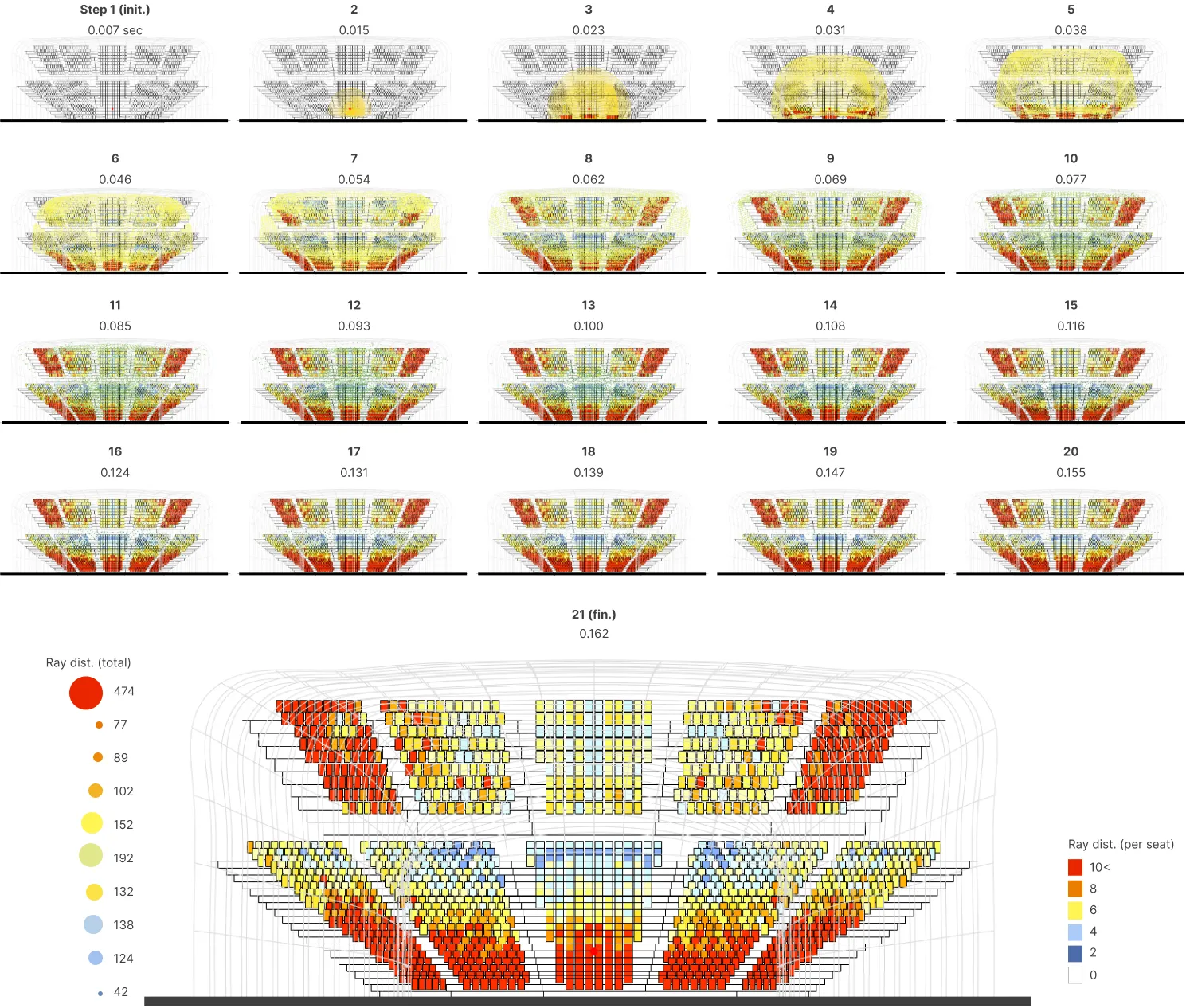
Animation#
Optimizing Sound Absorption#
| No. | Element | Material | Finishing | Absorption coef (% energy absorbed) | Page Ref. [5] | ||||||||
|---|---|---|---|---|---|---|---|---|---|---|---|---|---|
| 62.5Hz | 125Hz | 250Hz | 500Hz | 1KHz | 2KHz | 4KHz | 8KHz | Flatten All | |||||
| 1 | Wall | Rockwool 75mm | Fabric | - | 0.3 | 0.69 | 0.94 | 1 | 1 | 1 | - | 0.82 | 10 |
| 2 | Floor | Carpet | Fabric | - | 0.1 | 0.15 | 0.25 | 0.3 | 0.3 | 0.3 | - | 0.23 | 1 |
| 3 | Furniture | Chair | Fabric | - | 0.33 | 0.44 | 0.45 | 0.45 | 0.45 | 0.45 | - | 0.42 | 2 |
| 4 | Ceiling | Woodwool 50mm | Fabric | - | 0.3 | 0.4 | 0.5 | 0.85 | 0.5 | 0.65 | - | 0.53 | 3 |
| 5 | LED screen | - | - | - | - | - | - | - | - | - | - | - | 5 |
The table outlines acoustic material recommendations for optimizing sound in the auditorium, considering material types, finishes, and absorption coefficients. Selection criteria include sound resonance, durability, and aesthetics. Follow these guidelines for enhanced sound quality and material durability in the auditorium.
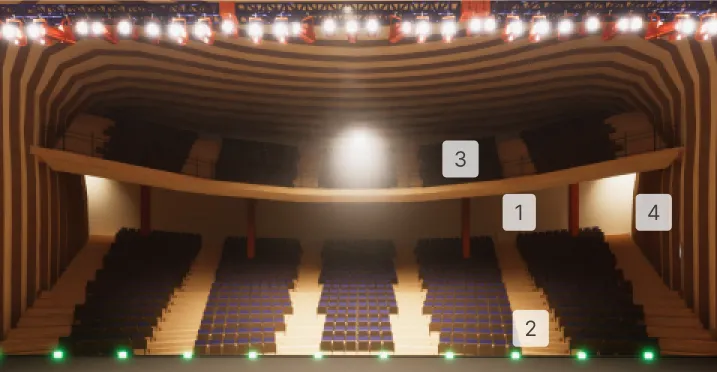
Acoustic materials in the auditorium are optimized for the best sound absorption. From Rockwool on the walls to carpet on the floor, every element contributes to improving the room’s sound quality.
Footnote#
Pachyderm is an open source collection of numerical and geometrical simulation techniques curated by Open Research in Acoustical Science and Education [4].
References#
- Kereta Api Indonesia. (2023). In Wikipedia. https://en.wikipedia.org/w/index.php?title=Kereta_Api_Indonesia&oldid=1183278651 ⌃
- Neufert, E., & Neufert, P. (2012). Architects’ Data. John Wiley & Sons. ⌃
- Architects’ Data. (2023). In Wikipedia. https://en.wikipedia.org/w/index.php?title=Architects%27_Data&oldid=1142529729 ⌃
- Pachyderm Acoustical Simulation. (2014). [Computer software]. https://www.food4rhino.com/en/app/pachyderm-acoustical-simulation ⌃ ⌃2
- Acoustic Traffic LLC. (n.d.). Absorption coefficients [dataset]. https://www.acoustic.ua/st/web_absorption_data_eng.pdf ⌃





